Big Oil: Chevron’s Soaring Earnings and Deepwater Jack St./Malo
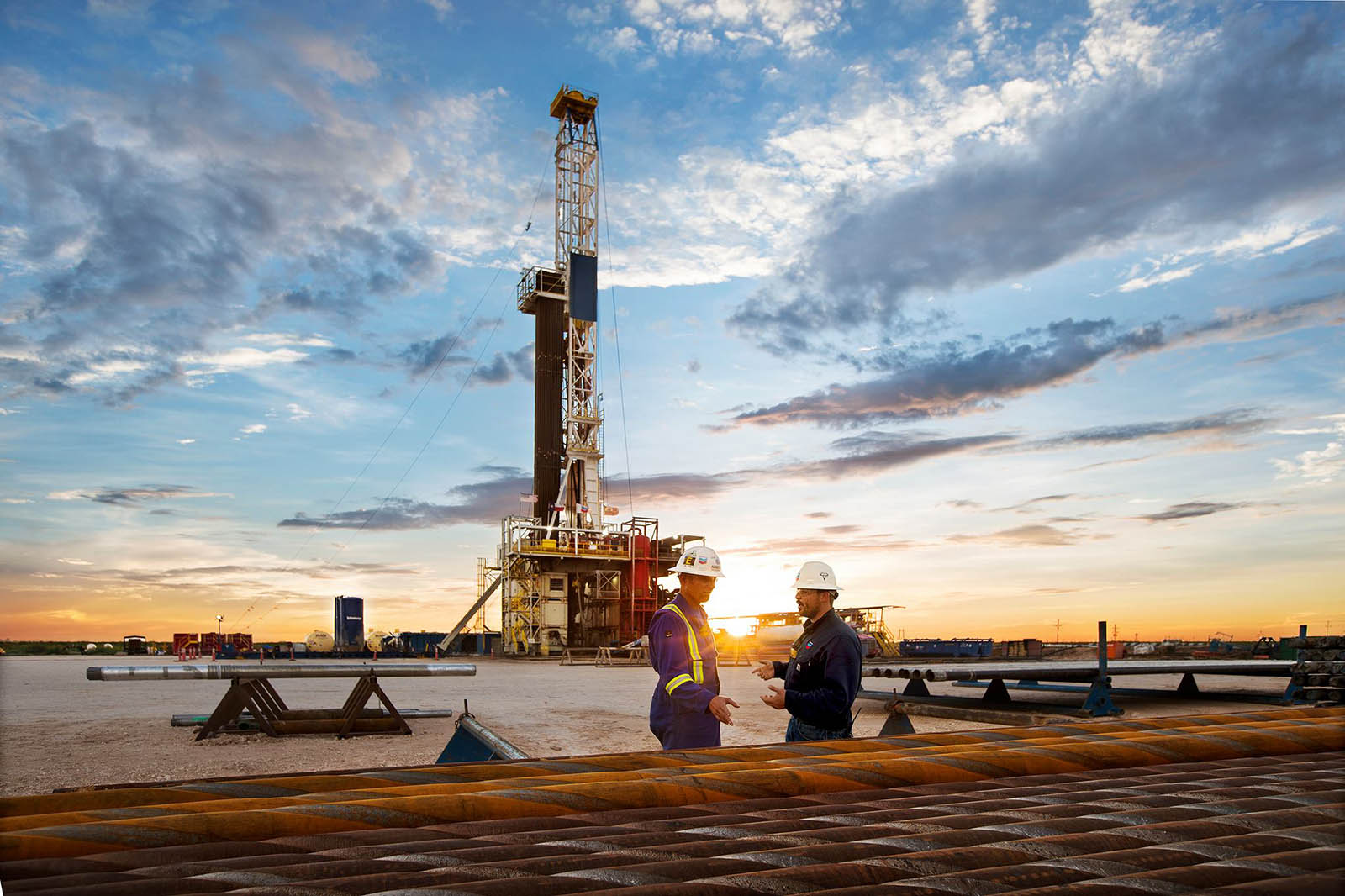
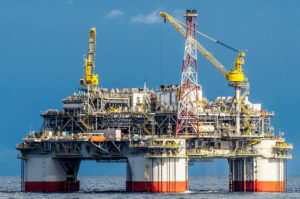
In June 2022, Chevron’s CEO Mike Wirth sent a letter to President Biden saying there wasn’t a quick fix to post-invasion global supply and demand imbalances. His company’s response to the recent market instability was to produce more oil and gas than it ever had, and invest in clean energy. Wirth said the administration must work closely with his industry to meet the nation’s energy, economic, and environmental objectives, and it wasn’t beneficial for Biden to “vilify” the industry. The president had been blasting the oil companies’ soaring profits while there was pain at the pump. He became apoplectic when they used profits to strengthen balance sheets, increase share holder dividends and purchase back stock. Biden called Big Oil “wartime profiteers,” and dissed Exxon Mobil for making “more money than God.” President Biden threatened windfall profit taxes and other “restrictions” if the oil companies didn’t increase American production and refining capacity.
When earnings reports came out, Chevron had profited a whopping $35.5 billion in 2022. To put this in perspective, Exxon Mobil raked in $55.9 billion, but it must be kept in mind that other companies, Apple for instance which banked $117.1 billion, left Big Oil in the dust. Chevron will use some of its stash to increase share holder dividends, and overtime will spend $75 billion buying back stock. Why do I give a damn? I own a few measly shares of Chevron, and argue Chevron matters to Houstonians, beyond charitable initiatives and sponsoring our marathon. About 8,000 of its approximately 37,000 employees live in the Houston area. Further, the company awards contracts to an unimaginably diverse gaggle of servicers and suppliers -construction, pipe, valves, IT, barges, whatever, engineering firms like KBR, translate “peoples’ livelihood.” Equally significant, Chevron is a prized institutional stock, which means managers slap it into union pension funds and ordinary Americans’ retirement accounts everywhere.
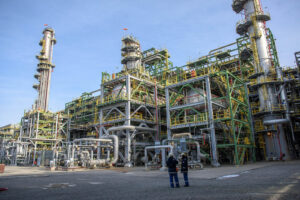
I won’t jabber about Chevron’s global operations, except to highlight its Australian mega-project producing natural gas and LNG for Asian markets, and cite Tengiz in Kazakhstan, ranked as an oil producing “supergiant.” Hydrocarbon and LNG production in Angola gave that country its first LNG project, and marked the first time associated gas, a byproduct of offshore crude oil production, supplied the LNG plant. It’s worth mentioning that after Biden eased sanctions on Venezuela, with the world’s largest oil reserves, Chevron hightailed it back into production. Also noteworthy are Chevron’s exploits in the Permian (grinding it), and a significant new gas discovery offshore Egypt. Downstream, the integrated energy company refines gasoline and jet fuel, and manufactures chemicals. Its portfolio includes renewables and newfangled carbon capture and storage, and clean hydrogen. But these aren’t my topic.
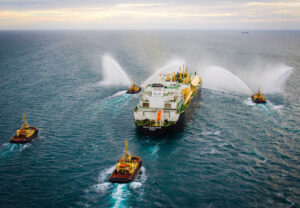
My topic is deepwater Gulf of Mexico. It blows my mind that some wells reach five miles below the Gulf’s seafloor. That’s an insane depth. In 2005,
Chevron’s Knotty Head well penetrated to 34,000 feet. Others go this deep. In 2009, BP’s Tiber well poked 35,055 feet. Why ungodly depths? Subsea GOM, miles down, is a place to find elephants. An elephant is a whopper size deposit. BP’s Thunder Horse discovery with the equivalent of over 1 billion barrels of oil was an elephant. I recall Don Briggs of the Louisiana Oil & Gas Association telling a Houston Chronicle journalist that Jim Bob Moffett’s GOM gas discovery was a “Godzilla elephant.” The location was technically shelf ultradeep not deepwater, nevertheless it illustrates that oil patch good ole boys pursue worldclass hydrocarbon deposits deep below the GOM.
Less than twenty years ago, working this deep was more of a crapshoot, to say the least. The extreme temperatures and pressures encountered could potentially cause equipment to malfunction or worse. Industry remembers back in 2006 when high pressure scared the crap out of Exxon Mobil and partners. It so freaked them out, they abandoned a shelf ultradeep well just before reaching its 32,000 feet target, an estimated $200 million down the toilet. Today, working in high temperature, high pressure environments is a lot less dicey. Equipment is more advanced. One wonders if the Macondo tragedy and the government’s temporary deepwater moratorium accelerated innovation.
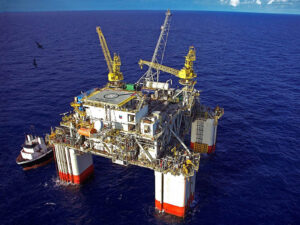
Chevron overcame technical challenges. A 2004 milestone was to successfully test its deepwater Tahiti well at record depths. Soon after, southwest of Tahiti, the Jack-2 well broke a record for the deepest successful production test in the GOM at 28,175 feet. Chevron’s press release spins multiple “world records” connected to Jack-2. Here’s one: “the perforating gun fired at world record depths and pressure.” Throughout, the company parlayed experience. By 2019, its GOM deepwater development Anchor withstood pressure of 20,000 psi. Anchor, Chevron crowed, is “one of the first ultra high-pressure projects in the world.”
All the record breaking and parlaying congealed into the supercharged deepwater project Chevron and its partners call Jack/St. Malo. Located 280 miles south of New Orleans, the Jack and St. Malo fields are two of Chevron’s largest discoveries in the GOM. They barreled through 7,000 feet of water, over a mile of water, then miles past the seabed, totaling five miles, to hit the reservoirs.
Chevron labels Jack/St. Malo its “signature” GOM deepwater project for more reasons than size. The fields, 25 miles apart, are being codeveloped with the largest semisubmersible floating production unit Chevron has in the GOM placed between them. Crude oil flows through the largest high pressure-design pipeline ever installed at this water depth. A barrage of technology never before used at this water depth in the GOM encodes Jack/St. Malo. My favorite is ocean bottom node technology. Nodes placed in rows on the seafloor record seismic data that describes subsurface layers nearly 30,000 feet below the ocean floor. “Seeing” into the reservoirs helps strategize well placement and predict reservoir performance. I personally think it’s cool that remotely operated vehicles position the nodes. I’m not saying machines with robot arms scurrying seismic equipment across the ocean floor in over a mile of water controlled by someone above water are unique to Chevron. They’re not. I’m saying it’s cool.















